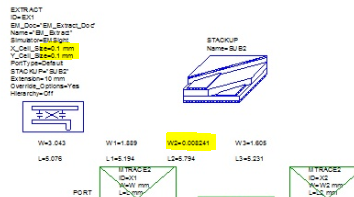btv_murthy
Full Member level 3

Dear Sir,
I tried for the Richard's transformation method lowpass filter design , got the proper s-parameter values for the schematic simulation. But I didn't get expected s-parameter values for the EM extraction. Design values are as follows.
Z0= 50 Ohm, f = 4 GHz, H=1.6mm , T =0.036, dielectric constant =4.4, Tangential loss =0.001
I am expecting following values for both SCHEMATIC and EM Extraction
Frequency DB S(1,1) DB S(2,1)
4GHz -3.1084 -3.0946
Herewith I am attaching the present getting layout and schematic diagram. Can u help anybody to get expected s-parameter values
I tried for the Richard's transformation method lowpass filter design , got the proper s-parameter values for the schematic simulation. But I didn't get expected s-parameter values for the EM extraction. Design values are as follows.
Z0= 50 Ohm, f = 4 GHz, H=1.6mm , T =0.036, dielectric constant =4.4, Tangential loss =0.001
I am expecting following values for both SCHEMATIC and EM Extraction
Frequency DB S(1,1) DB S(2,1)
4GHz -3.1084 -3.0946
Herewith I am attaching the present getting layout and schematic diagram. Can u help anybody to get expected s-parameter values





